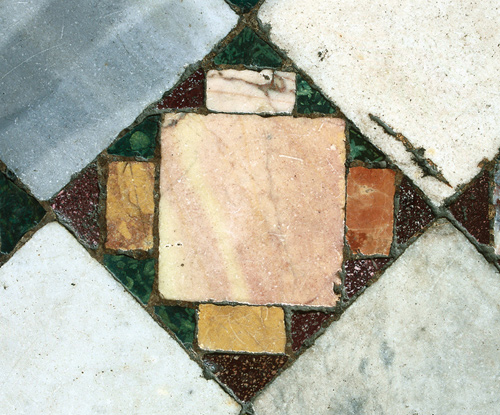Nowhere else in Rome can give such a clear idea of
the city’s layering and millennia of cultural riches than this wonderful
church. The very lowest level remains largely unexplored, dating back
to Republican Rome, probably the 2nd century BC. At the deepest
excavated level there are 1st-century AD buildings, including an early
house of Christian worship and a temple dedicated to the Persian god,
Mithras. Above that is a partially intact 4th-century AD basilica. When
that edifice was burned in the Norman sacking of 1084, the space was
filled in and a new church was built, using some of the original
architectural elements. In 1857, the Irish Dominican prior, Father
Mullooly, accidentally discovered the lower church and began the long
process of emptying out the rubble.
Via di S Giovanni in Laterano 06 774 0021 Open 9am–12:30pm, 3–6pm daily (from 10am Sun) Adm €3.00 to lower levels
|
|
You can usually enter
both through the balconied front gate or by a side door, off the small
piazza on Via di San Giovanni in Laterano. The entrance to the Lower
Church and archaeological areas is through the sacristy vestibule, where
you’ll also find books, slides and attractive postcards of the two
churches and the Mithraic temple’s works of art. The 1st-century
alleyways beneath are no place for claustrophobics, but the refreshing
sound of the underground spring down below may provide some relief.
|

Façade, San Clemente
|
Cafés and restaurants abound in the area. Try Cannavota for a traditional Roman meal.
|
|
|
Bring a small torch, so
that you can make out the ancient decorations in the shadowy Mithraeum.
But no photos or videos are allowed, and they mean it!
|
|
Top 10 FeaturesApse Mosaic Few
images are more joyous than this 12th-century variation on the
tree-of-life, in the Upper Church. Plump cupids, winsome animals and
lush foliage evoke a new-found Paradise. The stone and glass squares
were taken from a similar work in the destroyed 4th-century church below
it. Legend of Sisinius Frescoes These
frescoes in the Lower Church relate how a wealthy pagan, Sisinius, was
struck deaf and blind for suspecting his Christian wife of infidelity.
St Clement cures him but incurs his wrath and Sisinius’s furious
commands are the first known inscriptions in Italian. Mithraeum The
triclinium, with its platforms along both sides, was used for ritual
banqueting, where the male-only congregation imitated the gods’ last
meal before they reascended to heaven. The altar painting shows Mithras
slaying the Cosmic Bull to bring about Creation. St Catherine’s Chapel The
restored frescoes in the Upper Church by the 15th-century Florentine
artist Masolino show vibrant scenes from the life of St Catherine of
Alexandria. These provide one of the few opportunities in Rome to
appreciate the painting of the early Florentine Renaissance. Miracle of San Clemente Frescoes These frescoes in the Lower Church show how St Clement saved a boy from drowning. Schola Cantorum The
enclosure for the choir in the Upper Church), a gift from Pope John II
(AD 535– 55), was retained when a new choir was built. It is walled with
panels of white marble inlaid with colourful mosaics and carved with
early Christian symbols.

1st-century BC Domus This
mansion belonged to a man named Clemens, perhaps a relative of an early
Christian martyr and of St Clement, or perhaps a freed man of Jewish
birth. The 4th-century church was built precisely over the 1st-century
site. Cosmatesque Pavement This
technique, developed by the Cosmati family in the 12th century,
involved using fragments of stone from Roman ruins, to create intricate,
geometric patterns.

Paschal Candlestick This
12th-century spiralling motif, striped with glittering mosaics of
ancient glass, is another magnificent example of work by Cosmati
artisans in the Upper Church.

Courtyard and Façade The original entrance was through the quadroporticus, the medieval colonnaded square forecourt. The fountain and the scrolled façade were added in the early 18th century.
|